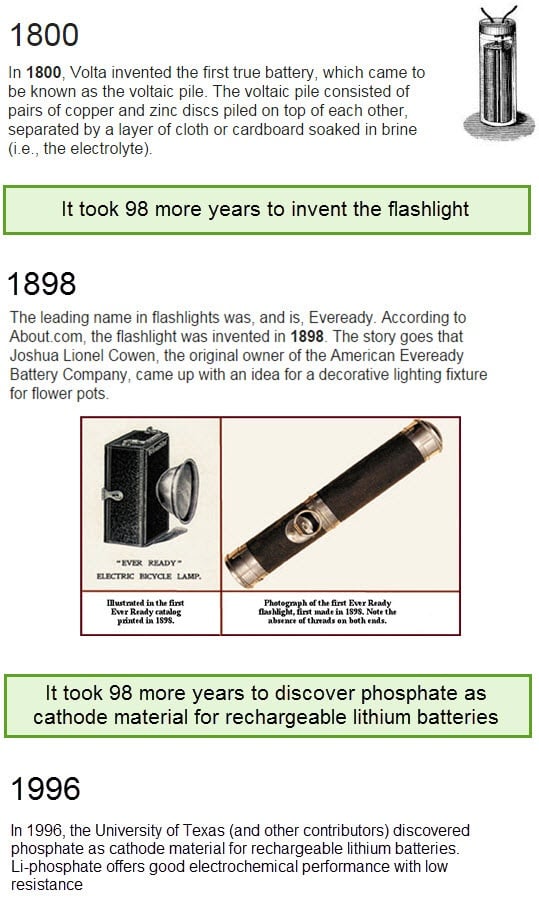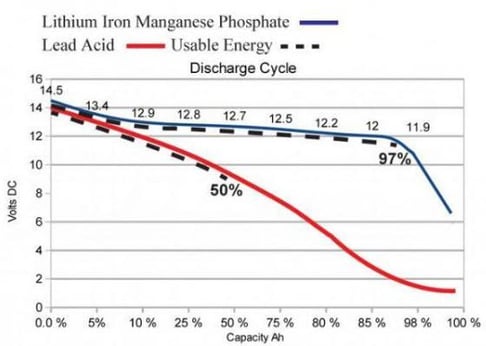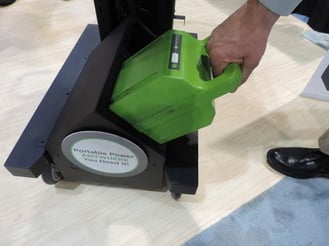While consumer products demand high energy density to obtain slim and elegant designs, industry focuses on durability and reliability. Industrial batteries are commonly bulkier than those used in consumer products but achieve a longer service life.
You are no stranger to the batteries and how they are electro-chemical devices that convert higher-level active materials into an alternate state during discharge. There have been many times you learned first-hand about the speed of such transaction determines the load characteristics of a battery. Also referred to as concentration polarization, the nickel and lithium-based batteries are superior to lead-based batteries in reaction speed.
No one can predict the real need of a battery as discharge loads range from a low and steady current flow of a flashlight to intermittent high current bursts in a power tool, to sharp current pulses on digital communications equipment, laptops and cameras.
We have taken on the challenge of serving manufacturing plants, distribution centers and retail environments which require rugged, long lasting power supplies. Today we look specifically at newer technology (relative to the battery invented in 1800.)

In 1996, the University of Texas (and other contributors) discovered phosphate as cathode material for rechargeable lithium batteries. Li-phosphate offers good electrochemical performance with low resistance. This is made possible with nano-scale phosphate cathode material. The key benefits are high current rating and long cycle life, besides good thermal stability, enhanced safety and tolerance if abused.

Li-phosphate is more tolerant to full charge conditions and is less stressed than other lithium-ion systems if kept a high voltage for a pronged time. As trade-off, the lower voltage of 3.2V/cell reduces the specific energy. In addition, cold temperature reduces performance, and elevated storage temperature shortens the service life but is still better than lead acid, NiCd or NiMH. Li-phosphate has a higher self-discharge than other Li-ion batteries, which can cause balancing issues with aging.
Summary Table of the Lithium Iron Phosphate (LiFePO4)
|
Lithium Iron Phosphate: LiFePO4 cathode, graphite anode |
|
|
Voltage, nominal |
3.20V, 3.30V |
|
Specific energy (capacity) |
90–120Wh/kg |
|
Charge (C-rate) |
1C typical, charges to 3.65V; 3h charge time |
|
Discharge (C-rate) |
1C recommended; 20–25C continuous; 40A pulse (2s); 2.50V cut-off (lower that 2V causes damage) |
|
Cycle life |
1000–2000 (related to depth of discharge, temperature) |
|
Thermal runaway |
270°C (518°F) Very safe battery even if fully charged |
|
Applications |
Portable and stationary needing high load currents and endurance |
|
Comments |
Very flat voltage discharge curve but low capacity. One of safest |
Li-phosphate is often used to replace the lead acid starter battery. Four cells in series produce 12.80V, a similar voltage to six 2V lead acid cells in series. Vehicles charge lead acid to 14.40V (2.40V/cell). With four Li-phosphate cells in series, each tops at 3.60V, which is the correct full-charge voltage. At this point the charge should be disconnected. Li-phosphate is tolerant to some overcharge, however keeping the voltage at 14.40V for a prolonged time, could stress Li-phosphate. (Which is why they may not be the best option for automotive applications.)
Characteristics of Lithium Iron Phosphate batteries:
- High Output performance with standard discharge for 2 to 5C and continuous discharge high current capacity of up to 10C and the instantaneous discharge pulse up to 20C.
- Good performance is observed at high temperatures from 65 to 95 degree centigrade keeping the battery in good safe condition.
- It shows excellent life cycles as after 500 cycles also it shows discharge capacity to be above 95%.
- Even though during excessive discharge to zero volts there is no damage caused.
- It gets quickly charged with very less time as compared to other batteries.
- Cost is not very high and hence can be used for variety of applications.
- It’s also environmental friendly battery which does not produce any waste
LiFePO4 has been recognized as the most promising positive cathode for a lithium-ion battery system for large-scale
Soon we will be launching a revolutionary new power system for the warehouse, distribution center and manufacturing plant.
 Do you want to be first in line?
Do you want to be first in line?
Sign-up here to be the first to know when the previews, product availability and first test client testimonials are available. We'll soon be unveiling our new Lithium-based Power System that will radically change the way you bring your portable power into the workplace.